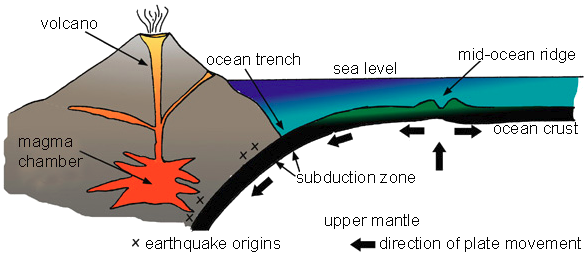Colliding tectonic plates
This task is about earthquakes and tectonic plates.

The diagram shows two of the plates that make up the Earth's surface colliding with each other. In this collision one plate is going under the other plate. Some of the associated geological features with this have been drawn in the diagram.
Explain why the following geological features or events have occurred.

